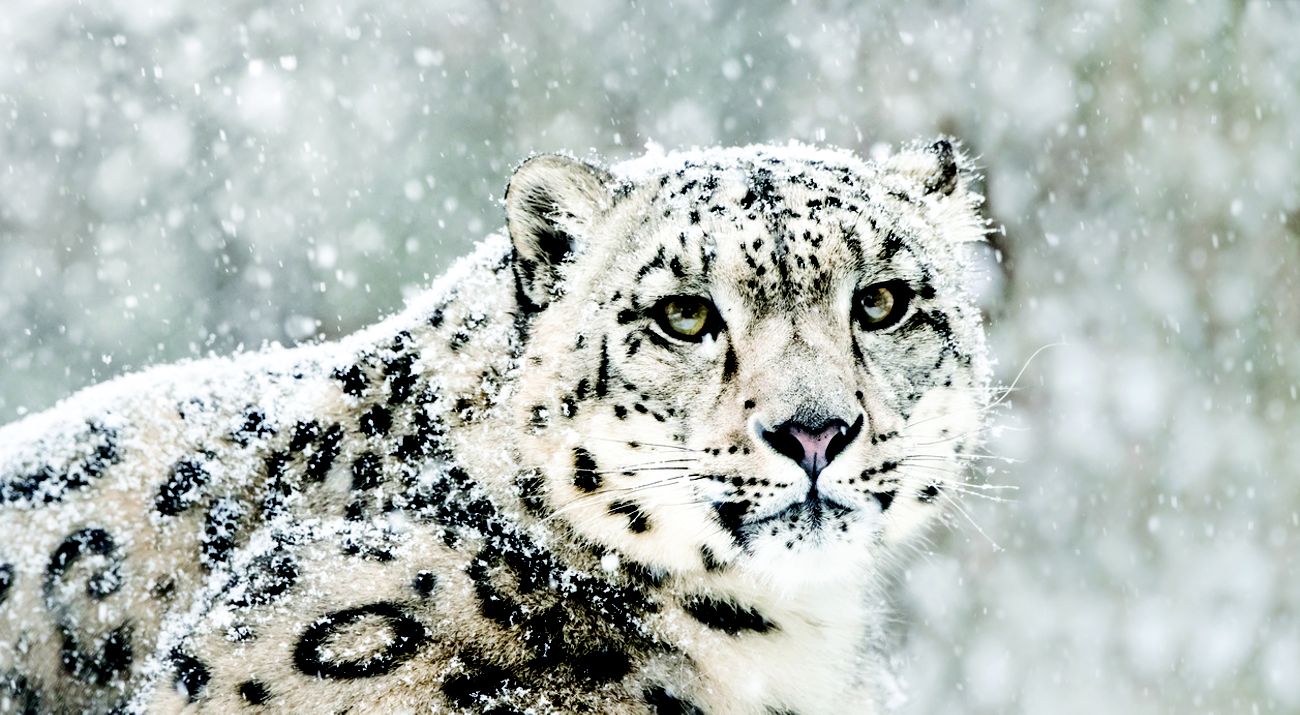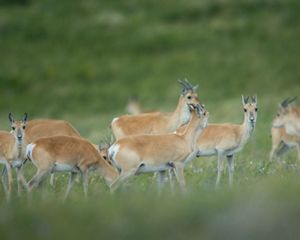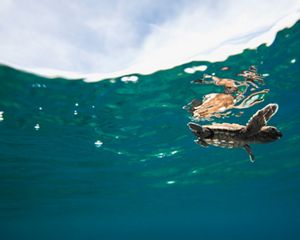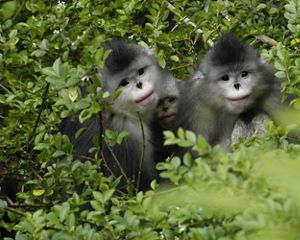Did you know snow leopards store fat in their tails?
We invite you to learn more about this elusive and beautiful cat: what makes them so special, the threats endangering them, and how YOU can help ensure these beautiful and mysterious wildcats don’t disappear forever.
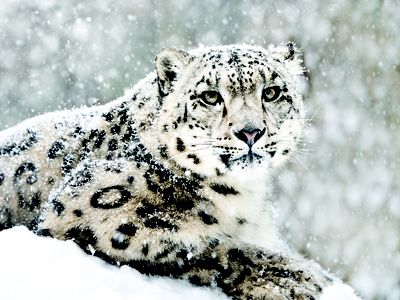
What Makes Snow Leopards So Special
1. They’re mysterious. Even communities who have shared the snow leopard’s high-altitude habitats for centuries… and even scientists who study snow leopards… don’t know everything about them. Snow leopards are very shy, well-camouflaged for their rugged terrain, and roam large areas—making them difficult to study and track. In fact, one of the conservation community’s biggest challenges is counting how many snow leopards are left in the world—so that we can accurately track the health of their population.
(Learn how TNC scientists, staff and partners are using technology to help solve this challenge, below!)
2. They’re perfectly adapted to their harsh habitat. Snow leopards are covered by thick, greyish white spotted fur to keep them warm and camouflaged at high, snowy altitudes—and they can even store extra fat in their tails to help them survive winters! Those long, thick tails also help snow leopards balance as they leap and silently slink across steep and rocky terrain, and their wide, furry paws act like snowshoes to help them traverse deep snow.
(Sadly, some of snow leopards’ special features also make them highly sought after by poachers… Learn more by reading on…)
3. Their only predator is humans. Snow leopards help maintain healthy ecosystems by keeping populations of their natural prey species in check—which in turn ensures grasslands aren’t overgrazed or damaged in other ways. But as livestock increasingly graze grasslands, snow leopard prey species like gazelles have less to eat—diminishing their herd sizes and leading snow leopards to attack livestock in order to eat. This sometimes leads herders to kill snow leopards in order to defend their livestock. Poachers also hunt snow leopards for their fur and other body parts, which are sometimes used in traditional medicine.
(Luckily TNC and partners of ours are working to reduce human killings of snow leopards—learn more below.)
Top Threats Endangering Snow Leopards—and How YOU Can Help
Snow leopards are hard to count because they’re so elusive and hard to track, but scientists estimate fewer than 6,500 snow leopards are left on Earth.
Although listed as a vulnerable species by the International Union for Conservation of Nature (IUCN), snow leopards are locally endangered in countries such as Mongolia—where TNC has worked for 15 years to protect land and natural resources critical to the survival of snow leopards and many other species, including humans.
1. Illegal hunting and poaching are driving snow leopards to the brink. Their thick, beautiful fur—which has markings unique to each individual snow leopard, similar to human fingerprints—is coveted by poachers who illegally sell snow leopards pelts for high prices. Snow leopard bones are also ground up and sold at high prices for use in traditional medicine—despite there being no evidence that snow leopard bones remedy any human malady.
How You Can Help: Never, ever buy snow leopard fur, body parts or medicine made from snow leopard bones. It is globally prohibited to buy or sell anything made from snow leopards. Report sales of snow leopard fur or body parts to local authorities.
2. Loss of habitat, food and water sources due to mining, development, overgrazing and climate change is shrinking snow leopard habitat across the 12 Asian countries where they live. Snow leopards need large areas to roam. If confined to small, fragmented, warmed climates, they can’t breed, hunt or survive.
How You Can Help: People like YOU provide the support we need to continue working closely with traditional communities and the Mongolia’s government to establish and sustain national parks and nature preserves that protect snow leopard habitat and more.
Give today to keep work like this going!
3. Retaliatory killings by humans also threaten the health of snow leopard populations. Snow leopards attack livestock when they can’t hunt enough of their native prey species to survive—and grazing livestock are causing those native prey species to diminish.
How You Can Help: TNC and local partners work with herding communities to graze their livestock more sustainably, in ways that keep grasslands intact—helping to ensure healthy habitats for snow leopard prey like gazelles and marmots. We also work together to find and fund ways for herders to keep their livestock safe without harming snow leopards.

YOU can make a difference!
We need to work together to secure a safe and healthy future for snow leopards and the rugged habitats they call home.
Your donation today could help support TNC and community partners working day and night to protect their surroundings and traditional ways of life, and the natural resources we all depend on.
Together we can protect wildlife like snow leopards, their remaining habitats and our precious nature!
Bring some fresh air and sunshine into your inbox!
You will receive important news about nature and wildlife, invitations to special events, lots of inspiration and much more!
